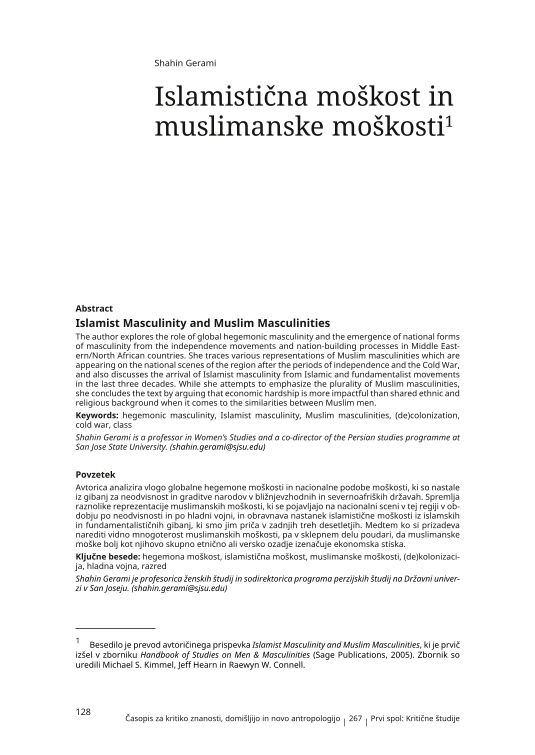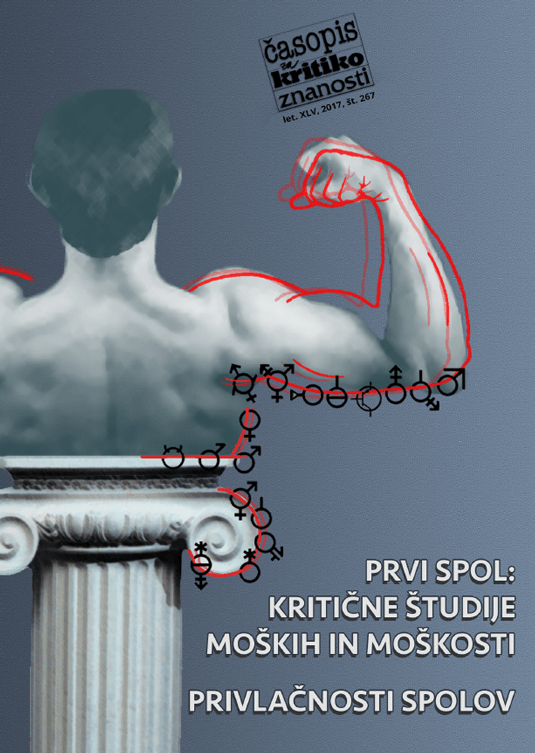The author explores the role of global hegemonic masculinity and the emergence of national forms of masculinity from the independence movements and nation-building processes in Middle Eastern/North African countries. She traces various representations of Muslim masculinities which are appearing on the national scenes of the region after the periods of independence and the Cold War, and also discusses the arrival of Islamist masculinity from Islamic and fundamentalist movements in the last three decades. While she attempts to emphasize the plurality of Muslim masculinities, she concludes the text by arguing that economic hardship is more impactful than shared ethnic and religious background when it comes to the similarities between Muslim men.




